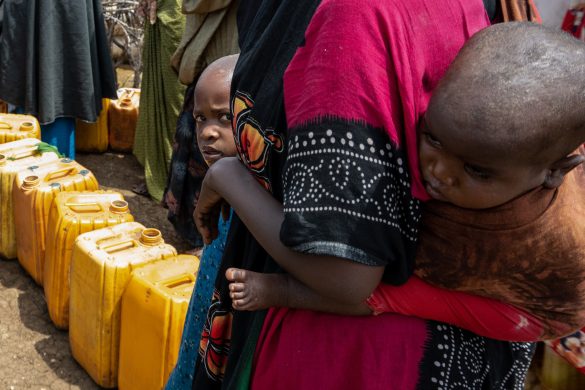Thirty Years of Development Economics
Development Economics through the Decades: A Critical Look at Thirty Years of the World Development Report
WASHINGTON, 5. January 2009: Modern development economics started around the time when experts grappled with problems related to the industrialization of eastern Europe in the aftermath of World War II. Next, economists turned their concerns towards Asia, Africa and Latin America.
The field, which deals with the economic aspects of the development process in low-income countries as well as with ways of promoting economic growth, was hitting its stride by 1978, when the World Bank produced its first World Development Report, or WDR.
A window on development economics
Since that first edition, the annual WDR has provided a window on development economics to a broad international readership. The report has served as one of the principal vehicles for encapsulating the World Banks knowledge of and policy recommendations on key global development trends.
From agriculture and the environment to economic growth and international trade, the WDR has offered a unique perspective on the evolution of thinking, policy making, and practice in the field of international development.
Titled “Prospects for Growth and the Alleviation of Poverty,” the first WDR was a slender report that became an overnight success.
Over the years, the prestige of the publication grew, and within the international development community, it quickly achieved iconic status. Imitators followed, and the bandwagon launched more than three decades ago is now crowded with reports inspired by the WDR.
A critical look at three decades of WDRs
To commemorate the WDRs 30th anniversary, the World Bank has published two new retrospective publications: one in print and the other in electronic format.
The first is the volume „Development Economics through the Decades: A Critical Look at Thirty Years of the World Development Report‟. It includes an essay by World Bank Economic Advisor Shahid Yusuf on how the WDR has impacted development thinking.
Over the years, whether the reports were attempting to define the relative roles of the market and the state, or looking at how institutions and services affect economic performance and wellbeing, the WDRs managed to mobilize a vast apparatus of scholarly references and to benefit from a wealth of empirical information.
– It is probably not an exaggeration to say that the Bank through the WDR, the WDI and other reports, has had a large hand in creating an appetite worldwide for empirical data and for indicators starting with the dollar a day measure of poverty, which has become a fixture since the 1990 WDR on poverty, said Yusuf.
WDRs over the years have struggled to come up with specific, proven policies for reducing poverty and promoting growth. That task is now especially difficult, given the worldwide crisis.
– Sustaining development in a harsher physical environment and a more crowded planet requires a great deal of human ingenuity. Knowledge is going to have to serve as the fulcrum of progress or provide the key to a decent survival. Much will depend upon the contribution of the hard sciences, Yusuf stated, adding:
– But I would hope that economics and the other social sciences can also rise to the challenge and do their bit.
Looking ahead: Experts have their say
If development economics is part of the solution to global problems, what might be the WDRs role? This was pondered at a December 2008 panel discussion at the World Bank. Speakers included Chief Economist Justin Lin, Princeton Economics Professor Angus Deaton, UNDP Executive Director Kemal Derviş, NYT Economics Professor William Easterly, and University of Tokyo Professor Takatoshi Ito.
– Given the seriousness of todays crisis, we should consider global finance as a possible topic for a future WDR, said Senior Vice President and Chief Economist Justin Lin, noting:
– We should consider the information asymmetry between the public and private sectors, between solvent and insolvent banks and between government regulators and the banking industry.
Lin went on to stress that industrial capital, comparative advantage and the adaptation of technological innovation are also worthy of future study, since they could help poor countries kick start growth and speed development, even as they struggle through the current downturn.
In his comments, William Easterly challenged the Banks approach to growth economics, saying: – The intellectual tragedy of 30 years of WDRs is that they never accepted the reality of the great unpredictability and uncertainty of economic growth in the short to medium run.
Easterly went on to suggest that development economists should aim for honesty regarding the shortcomings of the regression models they use and they should spend time studying failed efforts at growth as much as they scrutinize over-hyped „success stories‟.
The Complete World Development
Report, 1978-2009
Also being published to mark the anniversary is The Complete World Development Report, 1978-2009, a digital archive of the full collection of WDRs that allows users to explore, search, and view every page of every report as it originally appeared.
The DVD also contains a development database, derived from World Development Indicators 2008, along with a timeline of both international and World Bank events from 1945-2008.
For more information about Development Economics through the Decades: A Critical Look at Thirty Years of the World Development Report or The Complete World Development Report 1978-2009, visit the World Banks e-commerce site.
The current and upcoming WDRs are on economic geography (2009 edition) and climate change and development (2010).
More information:
WDR 2010 (forthcoming): Development in a Changing Climate
Climate change is one of many challenges facing developing countries – but unless it is tackled soon, it will reverse development gains. Looking at both the challenges and the opportunities presented by climate change, the upcoming WDR 2010 will tackle three questions: (i) What does climate change mean for development? (ii) What does development mean for climate change? (iii) What does all this mean for policy?
WDR 2009: Reshaping Economic Geography
Places do well when they promote transformations along the dimensions of economic geography: higher densities as cities grow; shorter distances as workers and businesses migrate closer to density; and fewer divisions as nations lower their economic borders and enter world markets to take advantage of scale and trade in specialized products.
WDR 2009 concludes that the transformations along these three dimensions of density, distance, and division are essential for development and should be encouraged.
WDR 2008: Agriculture for Development
In the 21st century, agriculture continues to be a fundamental instrument for sustainable development and poverty reduction. WDR 2008 concludes that agriculture alone will not be enough to massively reduce poverty, but it is an essential component of effective development strategies for most developing countries.
WDR 2007: Development and the Next Generation
Developing countries which invest in better education, healthcare, and job training for their record numbers of young people between the ages of 12 and 24 years of age, could produce surging economic growth and sharply reduced poverty, according to this report.
WDR 2006: Equity and Development
Inequality of opportunity, both within and among nations, sustains extreme deprivation, results in wasted human potential and often weakens prospects for overall prosperity and economic growth, concludes this report.
WDR 2005: A Better Investment Climate for Everyone
Accelerating growth and poverty reduction requires governments to reduce the policy risks, costs, and barriers to competition facing firms of all types – from farmers and micro-entrepreneurs to local manufacturing companies and multinationals – concludes this report.
WDR 2004: Making Services Work for Poor People
This report warns that broad improvements in human welfare will not occur unless poor people receive wider access to affordable, better quality services in health, education, water, sanitation, and electricity. Without such improvements, freedom from illness and from illiteracy – two of the most important ways poor people can escape poverty – will remain elusive to many.
WDR 2003: Sustainable Development in a Dynamic World
Without better policies and institutions, social and environmental strains may derail development progress, leading to higher poverty levels and a decline in the quality of life for everybody, according to this report.
WDR 2002: Building Institutions for Markets
Weak institutions – tangled laws, corrupt courts, deeply biased credit systems, and elaborate business registration requirements – hurt poor people and hinder development, according to this report.
WDR 1999-2000: Entering the 21st Century
This report notes that localization – the growing economic and political power of cities, provinces, and other sub-national entities – will be one of the most important new trends in the 21st century.
WDR 1998-1999: Knowledge for Development
This report analyzes the risks and opportunities that the global information revolution is creating for developing countries, and concludes that access to financial, technical, and medical knowledge is crucial to improving the health and living standards of the poor.
Kilde: www.worldbank.org















